Wittenberg is best known as the birthplace of the Protestant Reformation, where Martin Luther nailed his 95 theses to the door of the Castle Church in 1517. Today, the Luther Monuments in Wittenberg are a UNESCO World Heritage Site, attracting pilgrims from around the world. Tourists are encouraged to visit the Luther House, where he lived with his family, and the Castle Church, where his remains are buried. It is worth mentioning the German Lutheran reformer Philipp Melanchthon who was an associate of Martin Luther.
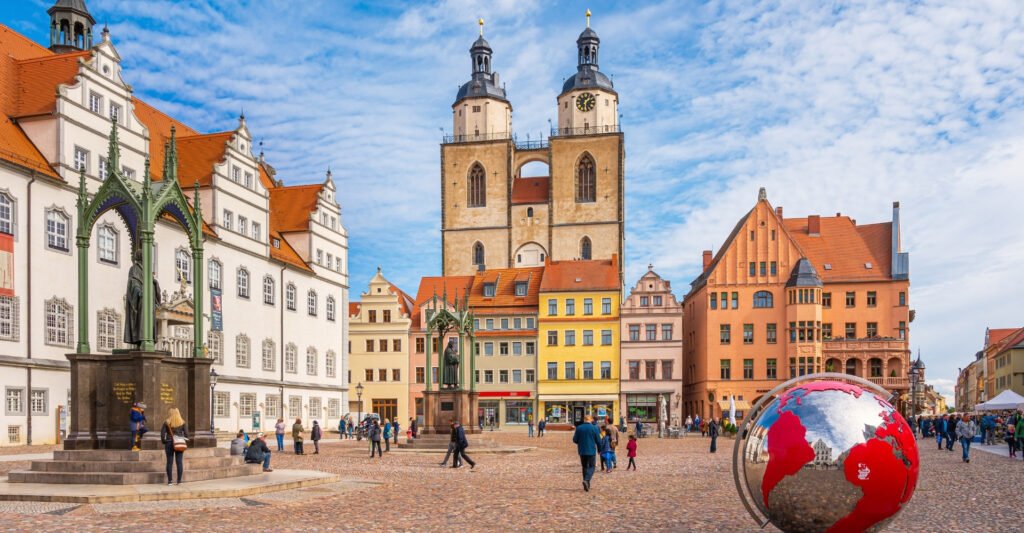
The city is home to numerous museums and galleries. The Cranach Foundation, named after the renowned painter Lucas Cranach the Elder, houses an impressive collection of his works from the Renaissance. The picturesque river Elbe flows through the city, creating the perfect atmosphere for a leisurely stroll or a boat trip. Beautifully maintained parks and gardens offer peace and relaxation.
Location
Wittenberg is located on the Elbe River in eastern Germany, 62 miles (100km) southwest of Berlin. Lutherstadt Wittenberg train station is located in the city center. From here it is only about a 10-minute walk to the Luther House.
Gardens of Dessau-Wörlitz \ UNESCO Garden Kingdom Dessau-Wörlitz
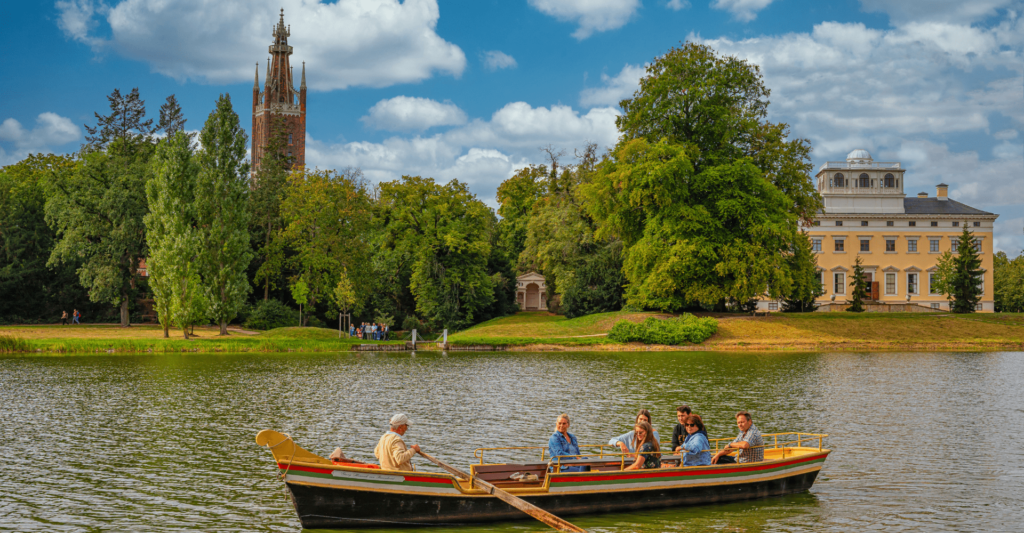
Covering an area of more than 140 square kilometers, palaces, more than 100 buildings in all shapes and sizes, and vast parks with varying designs were introduced to the river landscapes surrounding the Elbe and Mulde rivers. Constructed between 1769 and 1773 at the heart of Wörlitz Park, Wörlitz House became the first-ever classicist building in mainland Europe.
Wittenberg Marktplatz
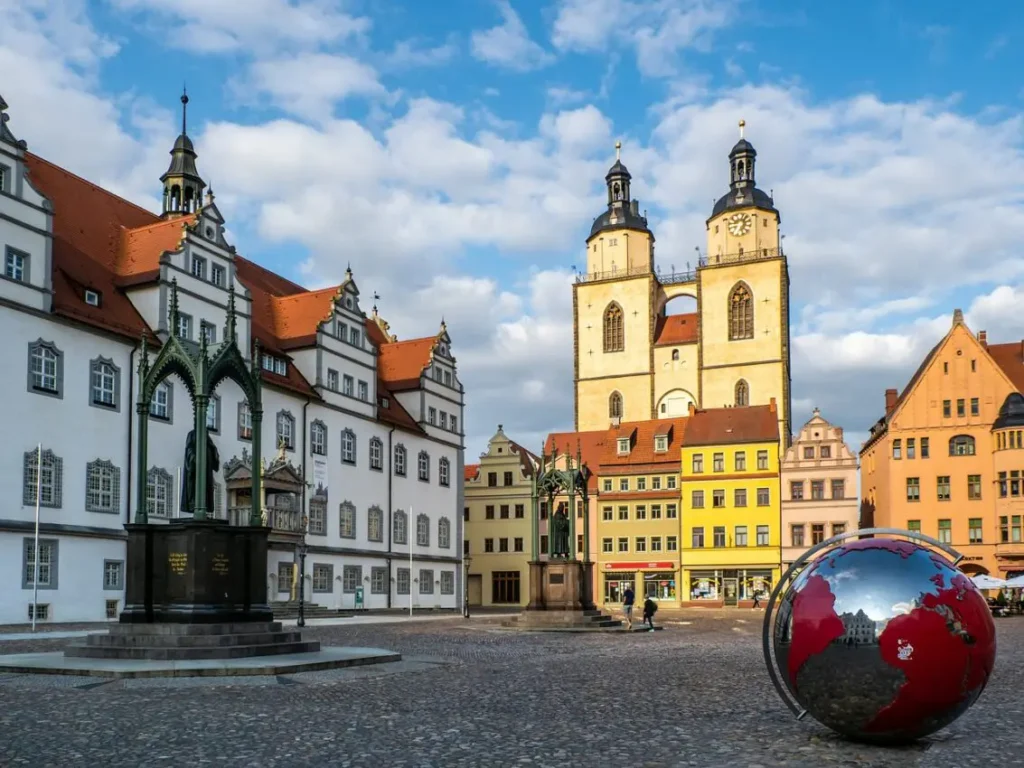
The old town is long and narrow, and flat, laid out along two parallel streets: pedestrian-only Collegienstrasse and Mittelstrasse. Most of the historical sights are along Collegienstrasse and Schlossstrasse. A stream runs along the main street, partially underground. Half way along, the street opens out into an attractive square, or Markt, with a statues of Martin Luther and Philip Melanchthon.
The Old Town Hall is situated on the market square at the very heart of the historical old town. UNESCO World Heritage Sites as well as several hotels and other forms of accommodation are close by.
Lutherhaus


The Lutherhaus owes its name to the fact that Martin Luther worked and lived there with his family after the Reformation. Due to renovation work, the Lutherhaus will not be open to the public until 2025.
The exhibition in the Lutherhaus tells of the life and work of the Reformer, but also of his family life and the rich impact story. Particularly worth seeing are the pulpit of Luther from the city church, the Ten Commandments panel by Lucas Cranach and a monk’s cowl Luther.
All Saints Church
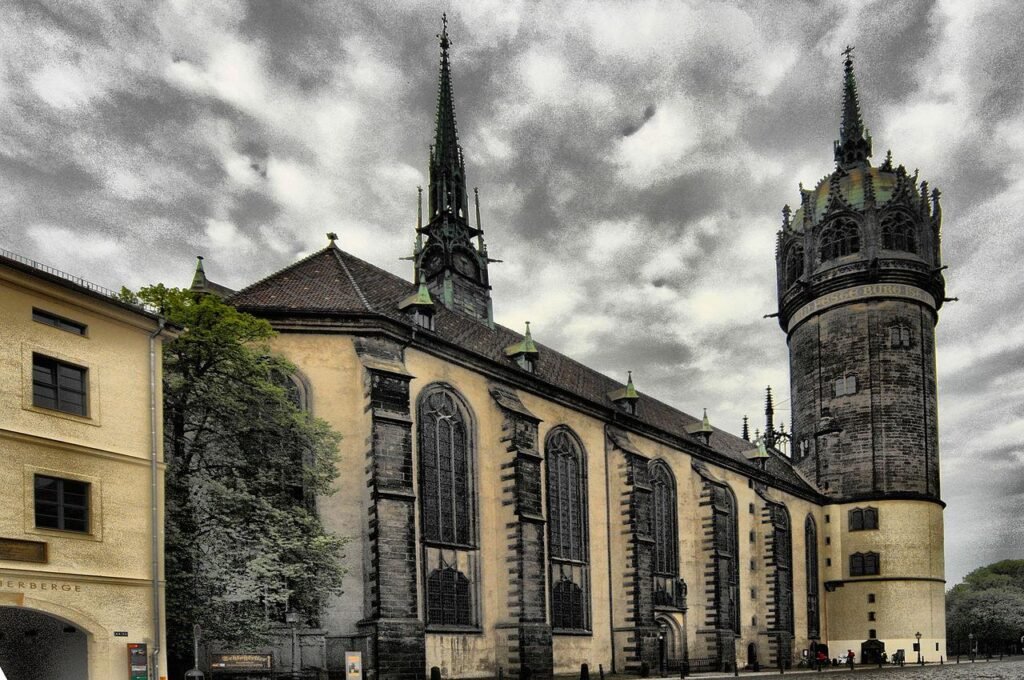
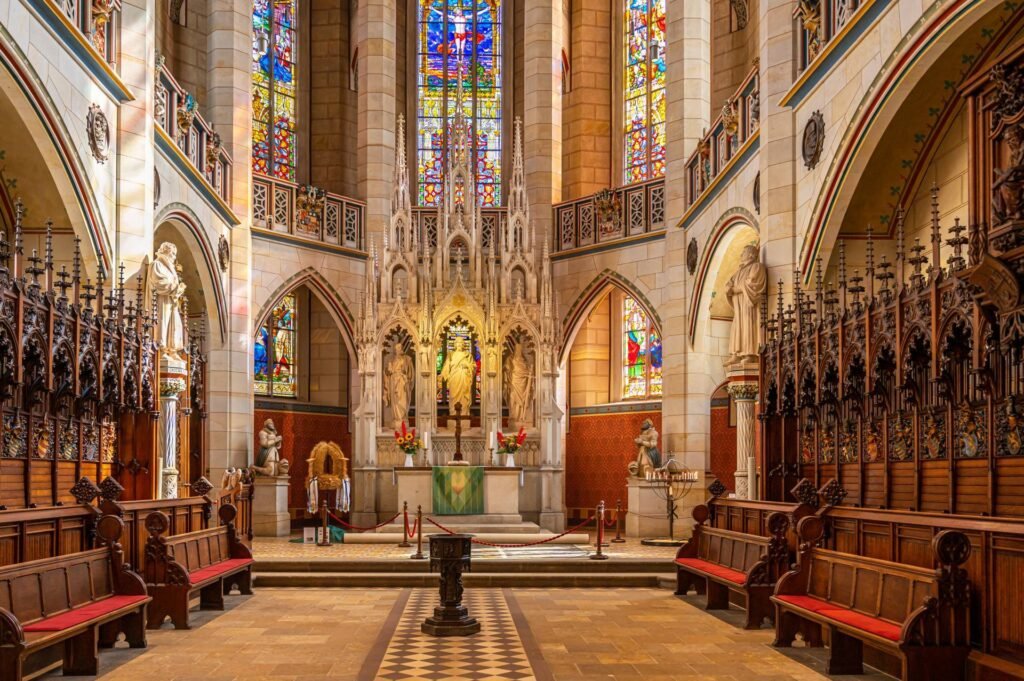
All Saints’ Church or Schlosskirche is a majectatic Gothic structure nestled in the heart of Wittenberg. This iconic church holds immense historical significance as the place where Martin Luther famously affixed his Ninety-five Theses to its door on October 31, 1517—an act that ignited the Protestant Reformation.
As part of the UNESCO World Heritage sites known as the Luther Memorials in Eisleben and Wittenberg, it attracts visitors from around the globe.
Melanchthon’s House
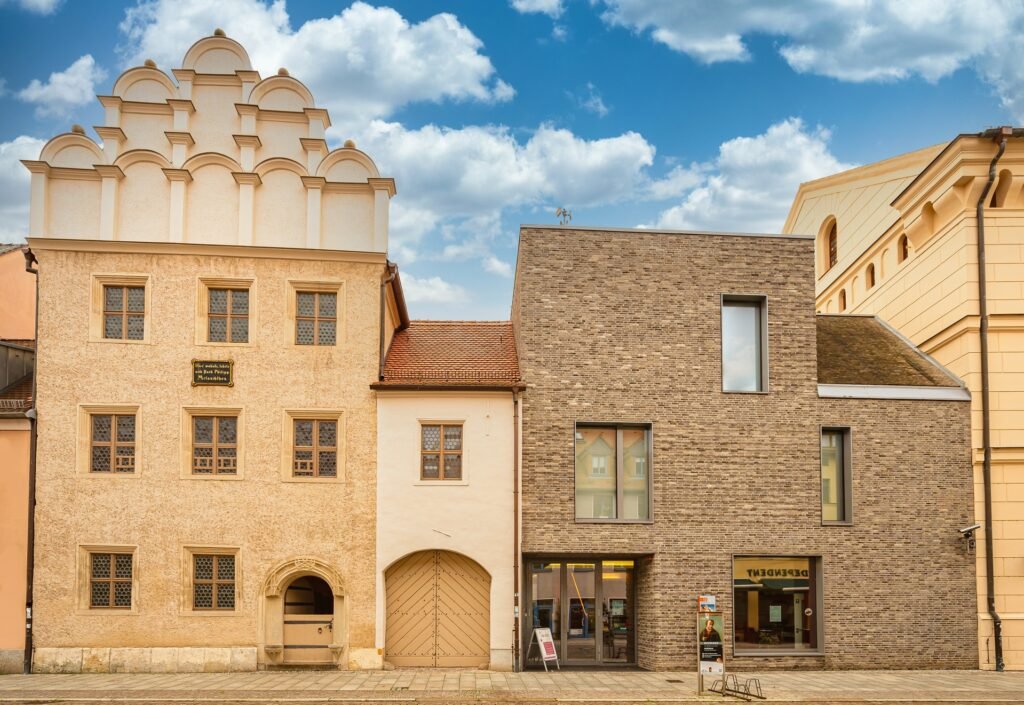

The Melanchthonhaus is a museum of the writer Philipp Melanchthon’s house. It is a Renaissance building with late Gothic arched windows and wide gables. It houses the study of the Protestant reformer who lived there with his family.
In 1954, the house became a museum dedicated to the life and work of Melanchthon, exhibiting paintings, graphics and manuscripts by him and his contemporaries. In 1996, it became part of the world heritage “Luther Villages in Central Germany”.
Cranach’s House
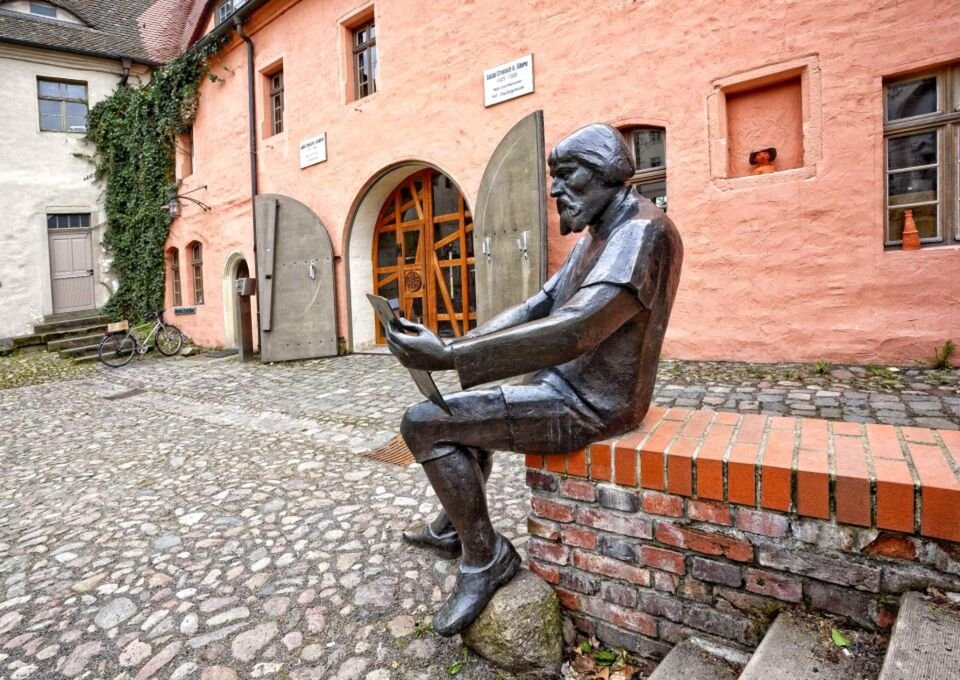
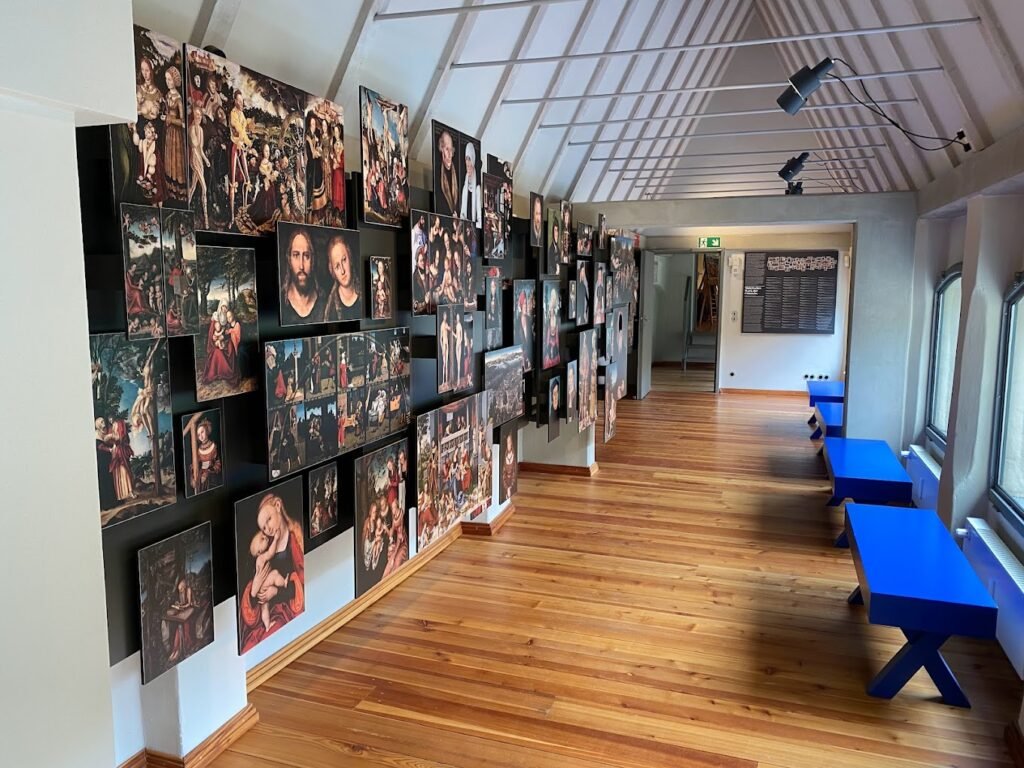
In today’s Cranach House with its associated courtyard at Markt 4, Lucas Cranach and Christian Döring ran a print shop where, among other things, Martin Luther’s Bible translations were reproduced. Today, the permanent exhibition “Cranach’s World” is located here, where visitors can learn everything worth knowing about the life and work of the Cranach family.
In 1517/1518, Cranach purchased the largest Wittenberg farm at Schlossstrasse 1 to expand his workshop. Today, you can admire the historic printer’s room here, where you can gain impressive insights into the old techniques of letterpress printing.
Wittenberg Zoo
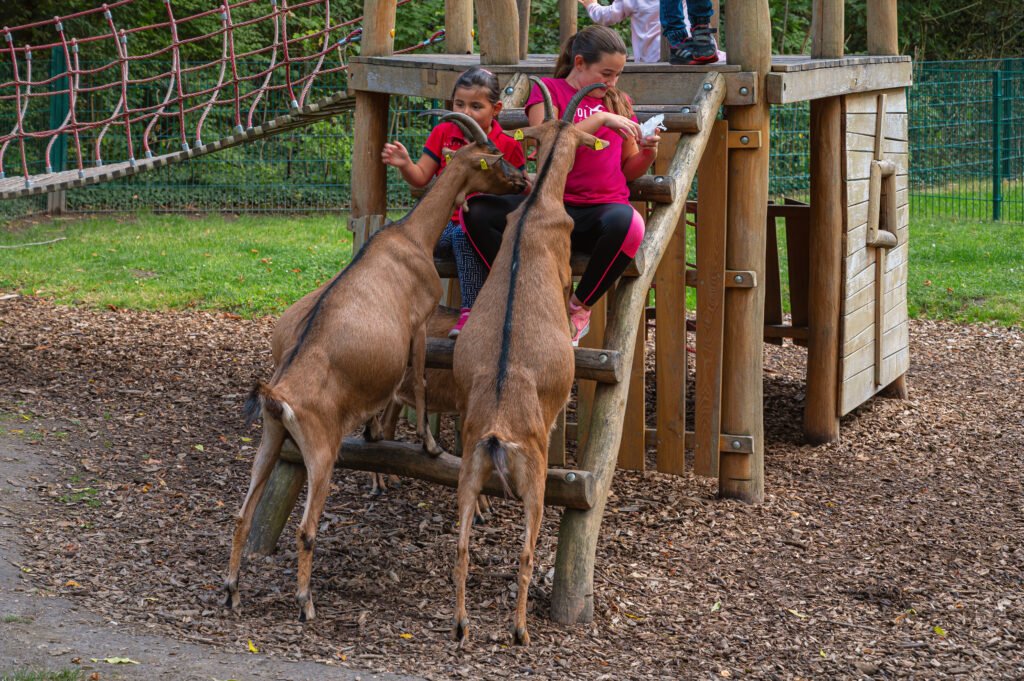
“Tierpark Wittenberg” allows you to experience a wide variety of animal species in their natural habitat. From predators such as tigers and lions to butterflies and animal enclosures to ensure a great deal of diversity.
Wittenberg Zoo is located in the middle of the city park Lutherstadt, which is home to around 25 different species of regional fish. The enclosures are home to various mammals as well as over 20 species of birds, such as parrots and even an eagle owl. Watch the meerkats in their vibrant activity or visit the playful monkeys.
